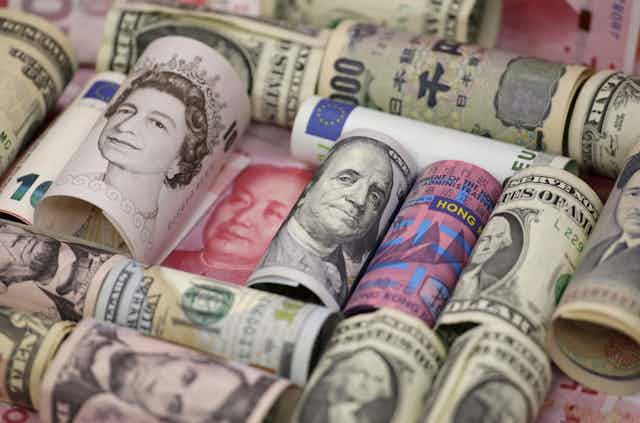Back in 2007, the first signs of stress in the US housing market were starting to appear. Managed investment funds at Bear Sterns and BNP Paribas were forced to close, or suspend payments, as they were unable to liquidate their assets to repay investors.
Following the surprising vote in favour of Brexit, several property funds (including Standard Life and Aberdeen Asset Management) have suspended redemptions. Once again, the canary in the mine for a possible crisis appears to be property – the difference being that this time it is commercial property.
Just as in 2007-08, central banks and governments are trying to reassure financial markets. However, already low (and in some cases negative) base interest rates leave little room for monetary policy to aid economic growth.
The US Federal Reserve has cited concerns about the global economy as a reason for holding off on further interest rate rises. There may also be a lack of enthusiasm from governments to use the fiscal policy lever. In the period since the last crisis, government debt (as a % of GDP) has continued to rise around the world. While the fiscal position in Australia is currently relatively strong, International Monetary Fund data suggests it has the worst debt trajectory of any developed country.
Australia managed to escape a recession during the global financial crisis primarily as a result of continued buying of commodities by China. Now, China is continuing its transition away from investment and towards consumption. Growth is slowing and is also directed towards areas that consume lower amounts of Australian minerals. Together with a potential build-up of problems in China’s financial sector, it is clear that the “red dragon” will not be able to rescue Australia if another crisis hits.
Warning signs
In 2007, the financial markets started to respond to a potential crisis. This manifested in credit spreads rising sharply in both the short-term money markets (the LIBOR-OIS spread) and in the bond market. Both spreads are starting to turn up but we are still far from levels that we may experience during a crisis.
A flight to quality
If a new crisis does emerge, then we can expect investors to become more risk averse. Typically, this means that “risky” assets such as stocks, corporate debt, and high-yield currencies will be sold.
During the global financial crisis, world stock markets declined by 56% (Australian stocks by 51%) from peak-to-trough. High-yielding currencies such as the Australian dollar fell by more than a quarter. By comparison, the post-Brexit market movements have been relatively benign.
Investors then invest in assets that they perceive to be “safe” – a “flight-to-quality”. Government bonds are purchased in large quantities (pushing yields lower) and funds flow into low-yield currencies such as the Japanese Yen and Swiss Franc.
The yield on Australian 10-year bonds fell from 6.6% to 4.0% during the global financial crisis. So while yields have fallen by 0.8% in 2016 – to an all-time low – there would still be further room to fall in the event of a crisis. Australian bonds may also prove particularly attractive to investors from European countries, where negative yields mean that they are paying the German and Swiss governments to look after their money.
Similarly, the Japanese Yen has some way to go if it is to repeat the appreciation of 2008 – this would not be good use for the Japanese economy.
The ultimate “safe-haven” for many is of course gold. In the 18 months from August 2007, the price of gold almost tripled. Since Brexit the gold price has increased by around 10% (slightly more in AUD terms) and gold mining stocks have performed even better – rising by 22%. The price is still below the peaks seen during 2011, in the midst of the European sovereign debt crisis, and would likely rise further (and quickly) should a crisis develop.
Possible crisis triggers
We are not currently at the point of crisis. The Bank of England and the European Central Bank have both highlighted the potential risks from Brexit, but are ready to act. The US Treasury Secretary suggests there is “no sense of a financial crisis developing”.
However, policy makers do not always get it right. As late as their August 7, 2007 meeting, the US Federal Reserve stated that its “predominant policy concern remains the risk that inflation will fail to moderate as expected”. Days later it was reassuring markets that adequate liquidity would be provided (just as the BoE and ECB is doing now). A month later it cut interest rates by 0.50%, and a year later rates had fallen to just 1%.
It is possible events in the coming months may push the global economy over the precipice. Further slowing in Chinese growth will not help. More likely, the continued fallout of Brexit and the implications for the remaining members of the European Union may be the trigger point.
The European banking sector is under extreme pressure and the debt crisis in Greece is still not fully resolved.
Italy, Europe’s fourth largest economy, is where the next major issue emerges. There is speculation that Italy may defy the European Union by pumping money into its financial system, and it is also facing a constitutional referendum of its own.
Investors should keep one eye on the evolving European political situation, and another on credit spreads.

